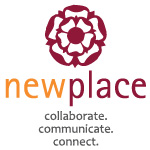
Capacity. It’s the ingredient supporting growth, increased staff, and the expansion of services for nonprofits. The National Council for Nonprofits provides many self-analysis and board training tools for organizations determining options for capacity-building.
So, how do organizations know to address capacity? The prospect of really addressing this elephant in the room can seem overwhelming for small and mid-sized nonprofits. This handy checklist may be a helpful first step. The Council’s set of evaluation tools can provide organizations with insight for strategic planning and capacity goal-setting.
Taking key steps in preparing for capacity will serve an organization as it embarks on a journey of growth. The TCC Group provides a practical examination for building long-term capacity. The 28-page paper outlines nine essential steps prior to implementation.
“As competition, scrutiny, demands for accountability, and service needs mount,” TCC notes, “nonprofit organizations must continually strengthen their capacity to survive and thrive. By providing concentrated capacity-building support for the long-haul, funders can enhance organizational performance for a set of nonprofits and help their programs to become more sustainable.”
In other words, foundations coach and train nonprofits to build capacity through the funding process.
However, as the Foundation Center states in a downloadable paper, The Capacity Building Challenge, “Funders tend to talk about capacity building programs, technical assistance providers talk about capacity building engagements, and nonprofit executives talk about a stream of activities.” The paper examines some of the inherent challenges and pitfalls of capacity building, including the fact that funders evaluating their grantees’ capacity-building efforts.
Identifying the goals and realities of capacity building are first steps, but many factors can fuel or inhibit capacity building.
In part two, factors such as board leadership, staff burn-out, and strategic financial planning deserve a closer look for organizations on the path to capacity building.
About the Author: Yvonne Hudson, principal of New Place Collaborations in Pittsburgh, loves creating mission-driven solutions for nonprofit clients. As a nonprofit staff member, board member, and volunteer, she has participated in aspects of capacity-building including programming, fund-raising, and audience development.










